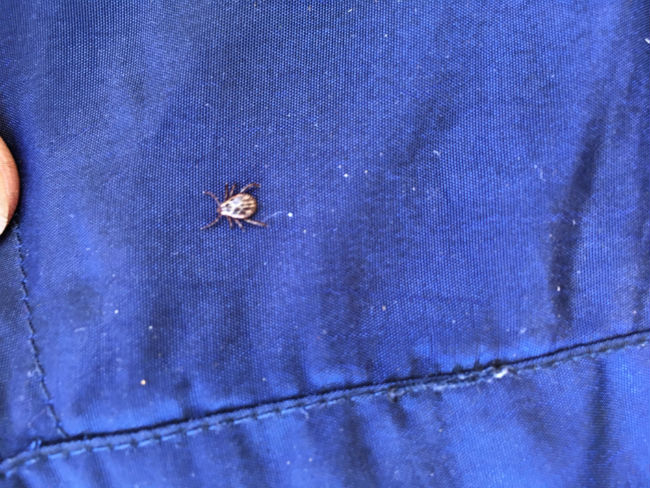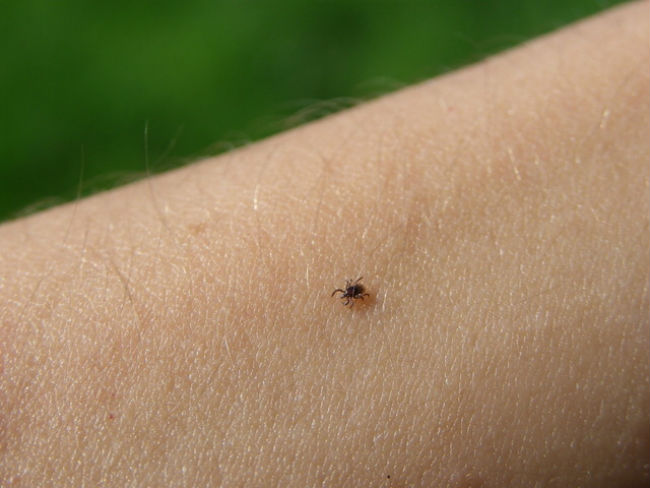Ticks are ectoparasites that are always in search of fresh blood to undergo all stages of metamorphosis. In fact, as they have different hosts during their life cycle, they may spread hazardous viruses, protozoa and bacteria from one individual to others. In addition, ticks are extremely harmful to dogs and humans. They may live almost everywhere on grass and under fallen leaves in forests and on lawns, in your front and back yards. About 20000 species of ticks are widely spread around the world. However, they tend to breed more in regions with warm and humid climates. Tick infestation is severe from spring to fall. Migrating birds carry sucking insects with them on their journeys. Thus, ticks can travel and spread around the world.

How the ticks look like
There are various species of ticks in the world that differ in size, color and food preferences. They are not bugs, they are more likely spiders. Ixodic ticks (or hard ticks) are the common vectors of diseases among humans and animals. They are flat and ovoid or pear-shaped arthropods. They have four pairs of legs. Blood-sucking ticks become cherrylike during feeding. However, they have a plate-like shield on their back (a scutum), which does not stretch when they engorge.
When unfed, ticks are generally brown, reddish, or black. Some species are plain in color, while others have markings. When fed, they can become dark red, purple, fleshy-pink, or a blue-grey in color.
What ticks eat
Most tick species are harmless to humans and mammals. They feed on dead plant material, dust particles, shells and soil fungi. However, there are blood-sucking tick species that are the vectors of serious, even fatal diseases. They belong to the group of Ixodids. Their host species are mammals, birds, reptiles and amphibians. Ticks of domestic animals cause considerable harm to livestock by spreading various species of pathogen that may cause serious tick-borne diseases. Moreover, the bites may result in anaemia and damaging wool and hides.
Ideal habitats for tick infestation
According to scientific studies, the ecosystem that satisfies two requirements (humidity and presence of hosts) is an ideal ground for severe tick infestation. It means, that the population density of host species and the moisture level in the tick habitat must be high enough for the blood-sucking pests to breed and develop. Sandy soil, swarth, rivers and lakes, hardwood trees, and the presence of deer, rodents, birds are the components of the appropriate ecosystem for dense ixodid tick populations.
What ticks are vectors of diseases?
Only those ticks that feed on blood of humans and animals can transmit pathogens. The well known among them are Ixodids (for example, a dog tick, a red tick, a tropical horse tick). However, not all ixodic ticks are infected with viruses and bacteria. Moreover, you can avoid infection if the ticks are removed within 36 hours. In fact, ticks need lots of time to attach to their host-organisms before starting a long-feeding session. Thus, tick bites often do not lead to infection.

You must also seek medical help if you can’t remove the pest or when some of its parts are still in the wound. Specialists know how to remove the insect safely. Beside, they may freeze them off with a medical wart remover. If the tick’s head and mouthparts break off during removal and stay in the wound, they can be removed with tweezers.
Tick infestation control measures
There are different methods how to prevent tick infestations in your front and back yards, and in the nearby forests.
To detect how severe your tick infestation is, use the “tick dragging” test. Simply take a piece of white material or a T-shirt, rub your skin with it to soak your sweat and warmth. Then, put the clothing on the grass and drag after you collecting ticks. This method helps evaluate the density of tick populations and their species.
The mechanical ways of tick elimination are regular mowing, removal of dead plant materials and excess vegetation, severing branches. It is better to burn dry leaves and other plant materials after winter as ticks tend to shelter there. Then they crawl out and stay in grass and low bushes. Direct sunlight is destructive for them.
Moreover, ticks avoid areas where mint, geranium, daisy, garlic, tansy, clove, mums, pyrethrum and lavender grow. You may use sprays with essential oils of eucalypt, geranium and palmarosa or rusa to keep the pests away from your yard. Another natural form of control for ticks is the guineafowl breeding. This bird consumes mass quantities of ticks.
Regularly control rodent infestations in your house and yards as they may carry infected ticks on them. How to prevent mice and rats read here.
To get rid of a tick infestation chemically, you can apply EPA-registered professional products that contain permethrin, bifenthrin and pyrethrin. The well-known miticidal chemicals are:
36.8 % Permethrin SFR 32 oz Pest Control Insecticide
Talstar Pro 96 ounce (3/4 gallon) jug
How to prevent tick infestations on your pets
Treat your pets with special miticidal products with imidacloprid (Advantage II, Advecta II), fipronil (Frontline, Sentry Fiproguard, PetArmour plus), dinotefuran and fipronil (Catego), imidacloprid and permethrin (Advantix). Products with permethrin are not for use on cats. Always apply chemicals (applicators, sprays, shampoo, collars and chewable tablets) as directed on the label. These miticidal products are highly effective against chewing lice, fleas, mosquitoes and tick infestation.
Leave a Reply